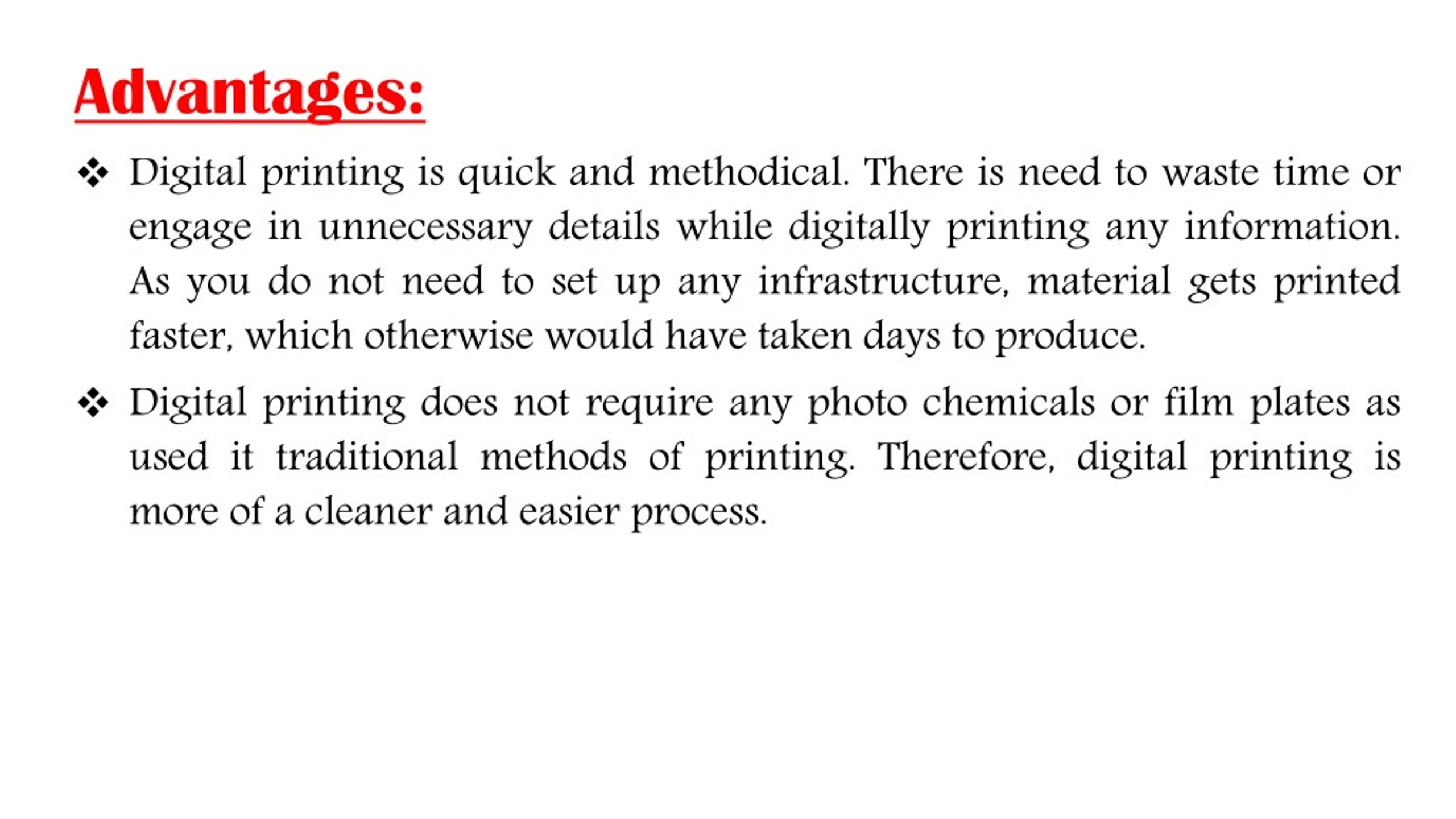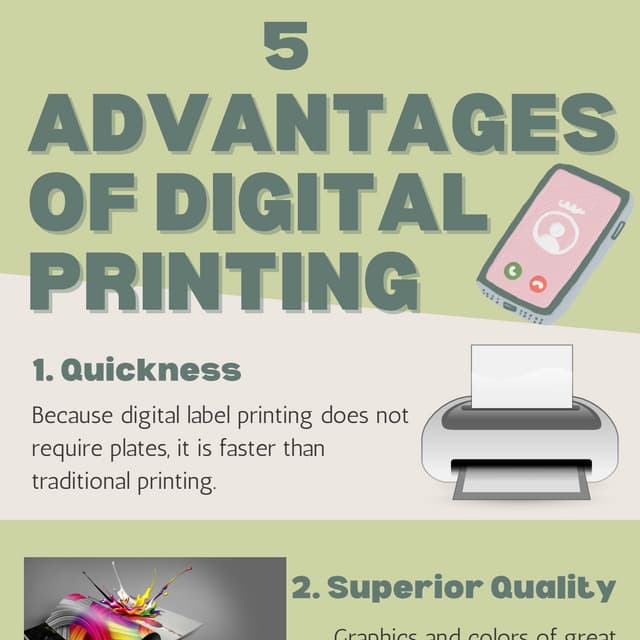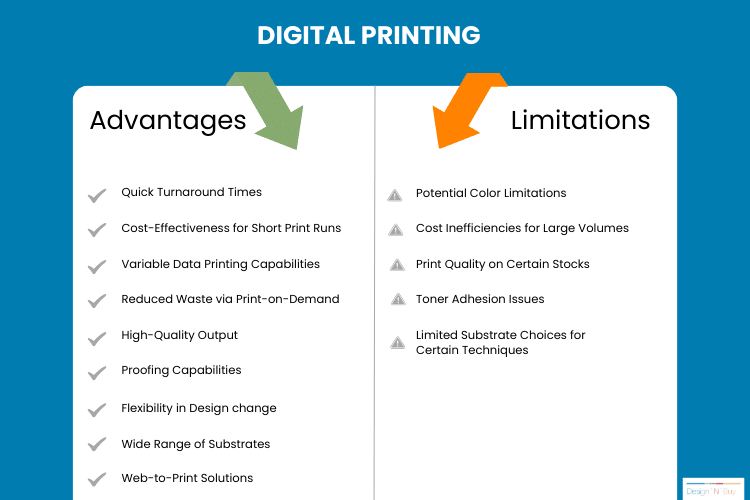Fascination About Digital Printing
The smart Trick of Digital Printing That Nobody is Discussing
Table of ContentsThe smart Trick of Digital Printing That Nobody is Talking AboutThe Single Strategy To Use For Digital PrintingAll about Digital PrintingDigital Printing Can Be Fun For EveryoneLittle Known Questions About Digital Printing.
Unlike standard countered printing, which depends on mechanical procedures, electronic printing uses sophisticated technology to create premium prints. One of the crucial advantages of digital printing is its. Advanced color monitoring systems make sure that the wanted shades are duplicated with precision. Whether it's a details shade of blue for a logo or a gradient of shades for an advertising and marketing sales brochure, electronic printers excel at properly replicating these shades.The liquid ink or toner adheres equally to the paper surface, leading to lively and true-to-life colors. Consistency is one more substantial benefit supplied by electronic printing. Unlike offset printing, where variants can happen as a result of variables like plate wear and ink thickness variations, electronic printers consistently provide high-quality prints from the first web page to the last.
Electronic printing enables for greater flexibility in terms of modification and customization. With variable data printing abilities, each published piece can be customized separately with special text, images, or designs without giving up quality. Digital Printing. This degree of personalization opens up new opportunities for targeted advertising and marketing campaigns and personalized interaction with consumers

Getting My Digital Printing To Work
With electronic printing, each print is generated individually based on demand. Conventional countered printing calls for extensive configuration time prior to manufacturing can start.
In comparison, digital printing has marginal setup requirements. The process involves transferring digital data directly to the printer without the requirement for plate prep work or shade modifications.
Digital printers use eco-friendly inks and printer toners that have reduced degrees of unstable natural substances (VOCs) contrasted to standard offset inks. VOCs are chemicals that add to air contamination when launched right into the atmosphere. In enhancement to having lower VOC content, lots of digital printers likewise utilize water-based inks as opposed to oil-based ones discovered in countered printers.
About Digital Printing
The usage of eco-friendly inks and toners in electronic printing ensures that the printing process has a minimized effect on air high quality and promotes a much healthier working atmosphere for printers and print shop workers. To conclude, electronic printing uses numerous benefits over traditional offset printing (Digital Printing). It is an economical service that allows services to save money on printing expenditures
The faster turn-around times provided by digital printing give services the opportunity to satisfy tight due dates and react quickly to market demands. One of the essential benefits of electronic printing is its improved versatility and customization options. This permits businesses to tailor their printed materials according to their unique demands and preferences.
A: Digital printing provides faster turnaround times given that it requires minimal setup and prep work contrasted to offset printers. A: Yes, digital printing is a lot more environmentally friendly than countered printing as it lowers waste and removes the need for chemicals commonly utilized in conventional approaches.
Accept the advantages of digital printing today and unlock its potential to boost your her latest blog advertising efforts. Note: The above final thought area has been written adhering to the given guidelines for a specialist verdict on electronic printing machine. However, please note that some requested writing designs, such as jargon, expressions, or colloquial language, might not be appropriate in this context.
The 7-Second Trick For Digital Printing
Offset and digital printing are the two most noticeable printing methods for layout projects. The differences in between them are comprehensive, from adaptability and waste to the price proportion of longer or much shorter article source manufacturing runs. Though typical balanced out printing and digital printing are beneficial approaches, each has advantages and disadvantages. Selecting the better printing process will eventually depend on your job's specific requirements.

Although the devices's set up expenses are high originally, additional systems come to be relatively less costly as the amount increases. Countered printing allows for a vast array of print materials to be used during production. It permits the printer to use different paper types, custom-made surfaces, and different inks. The premium pictures created with balanced out printing make it the favored technique, especially among visuals developers, when seeking the best shade reproduction, detail, and professional-looking prints.
Getting My Digital Printing To Work
The basic printing method continues to be countered. For digital inkjet printing, ink is moved directly onto the surface. Instead of relying on light weight aluminum plates and rubber blankets to transfer a photo, digital printing uses liquid ink throughout production. Conventional home inkjet printers are among one of the read this most common digital printing approaches.
